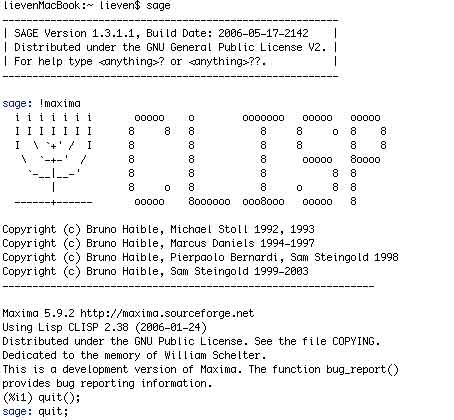Mark
Ronan has written a beautiful book intended for the general public
on Symmetry and the Monster. The
book’s main theme is the classification of the finite simple groups. It
starts off with the introduction of groups by Galois, gives the
classifivcation of the finite Lie groups, the Feit-Thompson theorem and
the construction of several of the sporadic groups (including the
Mathieu groups, the Fischer and Conway groups and clearly the
(Baby)Monster), explains the Leech lattice and the Monstrous Moonshine
conjectures and ends with Richard Borcherds proof of them using vertex
operator algebras. As in the case of Music of the
Primes it is (too) easy to be critical about notation. For example,
whereas groups are just called symmetry groups, I don’t see the point of
calling simple groups ‘atoms of symmetry’. But, unlike du Sautoy,
Mark Ronan stays close to mathematical notation, lattices are just
lattices, characer-tables are just that, j-function is what it is etc.
And even when he simplifies established teminology, for example
‘cyclic arithmetic’ for modular arithmetic, ‘cross-section’
for involution centralizer, ‘mini j-functions’ for Hauptmoduln
etc. there are footnotes (as well as a glossary) mentioning the genuine
terms. Group theory is a topic with several colourful people
including the three Johns John Leech, John
McKay and John Conway
and several of the historical accounts in the book are a good read. For
example, I’ve never known that the three Conway groups were essentially
discovered in just one afternoon and a few telephone exchanges between
Thompson and Conway. This year I’ve tried to explain some of
monstrous moonshine to an exceptionally good second year of
undergraduates but failed miserably. Whereas I somehow managed to give
the construction and proof of simplicity of Mathieu 24, elliptic and
modular functions were way too difficult for them. Perhaps I’ll give it
another (downkeyed) try using ‘Symmetry and the Monster’ as
reading material. Let’s hope Oxford University Press will soon release a
paperback (and cheaper) version.
Author: lievenlb
SAGE
(which stands for ‘Software for Algebra and Geometry
Experimentation’) includes and offers an interface to GAP, Singular,
Maxima and even PARI as
well as an interface to other packages such as Maple, Magma and
Mathematica (see here
for a full list of its features). More importantly, Sage offers a binary
for both PPC and Intel-Macs! I did check this out and it runs without
problems, in fact, after this initial check I installed from the sources
on my MacBook Pro and after one hour of compiling I did have working
(though not full) versions of GAP, Maxima and Singular. At first I
was a bit worried that only small subsets of the three systems were
installed, but it is quite easy to extend your Sage with additional
packages. From the Unix-prompt do a sage -optional
and you will get a list of all (additional) packages you have already
installed and those available for installation. SAGE is pretty well
documented with tutorials and reference manual to be found here. Even if you do not want to learn (yet) the Sage-commands but just
want to continue using the programs under its hood, this is pretty easy.
For example, to get to Maxima, you only have to type
!maxima from the sage-prompt to open up a maxima-session
(and similarly for Gap and Singular).

Bill
Schelter’s Affine-package is not included, but you can load and install
it from the maxima-prompt by load("affine.lisp"); but some
commands such as ‘fast_central_elements’ do not seem to
work as expected (or maybe I forgot the drill over the years, I’ll try
it out again).
